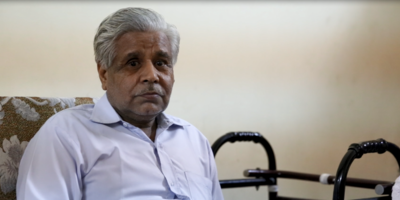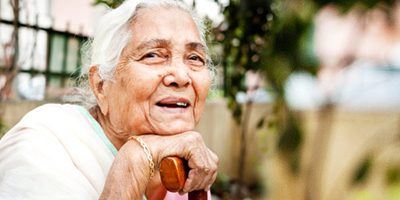
Adapting international guidelines to the Indian context for effective management of hip fractures among the elderly
India lacks standard guidelines for management of hip fractures among the elderly. This contributes to variation in provision of care within hospitals in the country leading to high mortality and poor quality of life.
Taking a leaf from the international guidelines for management of hip fractures among the elderly that exist in countries like the United Kingdom and Sweden, The George Institute for Global Health, India has begun the process of documenting the existing pathways of care within hospitals in Delhi. The aim is to improve the quality of life among the elderly and reduce deaths by endeavoring to bridge the evidence-practice gap.
"Stroke and fractures are two conditions where the care needs increase rapidly with increasing age," says Professor Santosh Rath, Programme Head, Global Surgery and Disability Research, The George Institute.
The UK-based National Institute of Clincal Excellence (NICE) has developed guidelines for the management of hip fractures which involves fast track admission into orthpeadic wards, combined geriatric and orthopaedic care, early surgery, prevention of pressure sores and treatment of osteoporosis and falls assessment. The adoption of NICE guidelines for management of hip fractures in the UK demonstrated that good care is cheaper in the long run and improves quality of life (QOL)."
Hip fracture is one of the most common and serious health problems affecting older people. With an ageing population, providing high quality care for people suffering from a hip fracture is becoming increasingly important.
A 10 years’ review of hospital inpatient activity data in the UK published by the Nuffield Trust in their Quality watch report reveals that the number of hip fracture admissions increased by 15.5 per cent between 2001/02 and 2012/11. The increase appears to be mainly due to the general ageing of the population. The management of these hip fractures in the NHS has changed over this decade, generally for the better, with reductions in 30-day mortality rates and length of hospital stay, and an increase in the proportion of people undergoing surgery within 48 hours of admission.
The data points to changes in patterns of care for older people, with shorter lengths of stay but higher levels of readmission being observed. These are consistent with patterns of acute care found elsewhere and an indication of changes in wider health and social care systems. These data also indicate changes in the population, with a growing community of people surviving hip fracture, with increasing frequency of admission. This group of people will most likely have significant health and social care needs.
Currently little is known about the pathways of care and outcomes for hip fracture in India where it is estimated that by 2020, almost 20 per cent of the Indian population will be older than 60 years, and the annual incidence of hip fractures will reach 600,000. Based on current mortality data, an estimated 40 per cent of elderly individuals will die within a year of sustaining a hip fracture.
"The introduction of integrated pathways of care for the management of hip fractures in Sweden and the UK has demonstrated significant reductions in mortality, length of hospital stay and cost," says Professor Rath, adding: "We are proposing to undertake a study to facilitate the development of evidence based strategies to improve the management and outcomes of hip fractures in India."
Two leading hospitals in Delhi – All India Institute of Medical Sciences (AIIMS) and Guru Tegh Bahadur Hospital (GTB) – and two more private hospitals, will be part of the pilot study. "In India, the problems of the elderly are increasing due to the rapid demographic transition. When it comes to hip fractures, we need to find a way within the existing structure to save lives, improve the quality of life and reduce the cost of care," say senior doctors involved in the study.
For the first time, the project will bring together orthopaedic surgeons, geriatricians/specialist physicians, anaesthetists, nurses, rehabilitation specialists and hospital managers involved in the care of the older people to discuss the practices around management of hip fractures. "Such discussions rarely take place in India. Our aim is to identify what the practices are and since we already know what works in the West, we will be in a position to identify and then work towards reducing the practice-evidence gap," says Professor Rath.
In the pilot phase, the project will look at the existing pathways of care in the hospital. This will be done through interviewing clinical leads involved in the pathway of hospital care, focus group discussions with the hospital care providers and patient and carer groups. "The study will also collect information on factors affecting provision of care like early access to treatment, economic impact and difference in care-seeking behavior between men and women so that we can understand the barriers to improving the quality of life," says Dr Lalit Yadav, Research Fellow, The George Institute for Global Health-India.
Over the course of the next few years, the project will look at evolving mechanisms to improve the management of hip fractures in both rural and urban areas of the country. "With provision of basic surgical services coming into the domain of public health, we need to work towards ensuring that district level hospitals in the country are able to deliver safe and minimum quality of surgical care " says Professor Rath.



